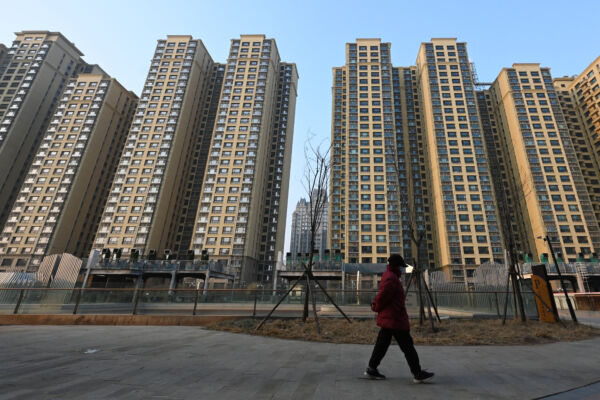China’s Evergrande Group (03333.HK) once had a market value of up to 400 billion Hong Kong dollars, but now it is exiting the market with a market value of less than 2.2 billion Hong Kong dollars. As Evergrande officially withdraws from the Hong Kong stock market, the question of who will bear its massive debt of nearly 2.4 trillion yuan and the future of hundreds of thousands of unfinished properties have become the focus of attention across various sectors.
Analysts believe that this debt will ultimately be shouldered by four major types of creditors, while the owners of the unfinished properties may find themselves out of luck. On August 12, Evergrande announced that the Hong Kong Stock Exchange has decided to cancel its listing qualifications and will officially delist on August 25, 2025. Evergrande has made it clear that it will not apply for a review, signaling its acceptance of the delisting outcome.
Evergrande’s delisting was an inevitable outcome after a long period of trading suspension. According to the rules of the Hong Kong Stock Exchange, listed companies that have been continuously suspended for more than 18 months may face delisting. Evergrande has been suspended since March 2022, far exceeding this time limit.
Market analysis generally believes that delisting means Evergrande loses its last lifeline for financing in the public market, further worsening its already dire financial situation. Financial blogger “Liu Da” pointed out that Evergrande has long been insolvent, and even without delisting, its financial situation would not attract new investors. Delisting has merely exposed the last fig leaf.
For ordinary shareholders, Evergrande’s shares will no longer be tradable in the public market after delisting, and with the company facing significant losses, there is little possibility of realizing any value from the shares. This loss of assets is a substantial blow.
According to Evergrande’s financial report as of June 30, 2023, the company’s total liabilities amounted to 2.39 trillion yuan, while total assets were only 1.74 trillion yuan. This indicates that even selling off all assets, Evergrande would not be able to repay all of its debts.
Sina Finance’s headline account “Undeterred Finance” stated that the near 2.4 trillion debt of Evergrande will ultimately be borne by four types of creditors: First, various banks hold the majority of the 2.4 trillion debts owed by Evergrande, which are mostly bank loans. If Evergrande fails to repay these loans, they will be considered bad debts. Smaller banks will have to gradually absorb these bad debts over time.
Secondly, suppliers are owed over 550 billion yuan by Evergrande. As suppliers to Evergrande, they can only accept their losses. Contractors, decoration companies, and others are likely to be severely affected as they may lose their funds due to Evergrande’s collapse.
Thirdly, investors in Evergrande’s financial products are largely employees of the group who invested in the Evergrande Wealth Platform in the later stages. After Evergrande Wealth Platform’s collapse, these investors are unlikely to recover their investments.
Lastly, Evergrande’s overseas creditors who previously bought a significant amount of bonds issued by the company are now at risk of not being repaid since Evergrande’s delisting. With no possibility of debt-equity swaps or debt restructuring after delisting, Evergrande has signaled that it cannot be saved and the overseas bondholders should not expect repayment.
“Undeterred Finance” concluded that the near 2.4 trillion debts of Evergrande leave little hope for repayment, with banks, suppliers, investors, and overseas creditors likely to bear the losses. Evergrande’s collapse has not only caused severe losses to various creditors but has also seriously impacted the confidence in the investment market, a recovery of which will take a long time.
Records show that the aftermath of Evergrande’s collapse left 1.62 million unfinished properties, of which about 800,000 have been delivered under the government’s “ensure delivery” policy, leaving over 700,000 still in an unfinished state.
“Undeterred Finance” believes that the hope for the delivery of these unfinished properties remains slim. For instance, projects like “Evergrande Royal Lake World,” with only a grand entrance built, are unlikely to be completed, leaving property owners at a loss.
Financial blogger “Liu Da” mentioned that the delivery of many unfinished properties primarily relies on the “ensure delivery” policy. This policy is typically led by local governments coordinating with banks to provide financing and involving state-owned enterprises or other third parties to take over the projects to ensure the homes are delivered to buyers.
However, despite the “ensure delivery” policy, buyers still face issues like delays in delivery and declining quality, making them the most direct victims of this crisis. Ultimately, it is likely that shareholders and property buyers will bear the consequences.
Evergrande’s collapse has exposed the immense risks of the real estate industry’s past reliance on high leverage and high turnover, forcing the entire industry into a painful period of deleveraging and removing bubbles. The outdated model of reckless expansion and blind construction can no longer succeed.
“Liu Da” stated that despite the recent emphasis by the Chinese government on the real estate market policies of “risk prevention and destocking,” he believes that even if property prices stabilize, the public should not expect a return to the past scenario of skyrocketing prices annually.

